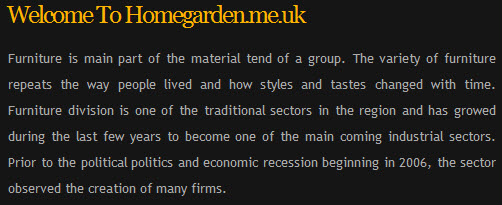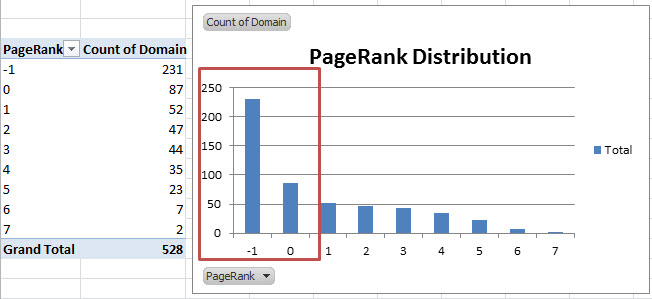5 Penguin-Friendly Link Building Tips
Since Google launched their Penguin update on April 24th, millions of websites have been falling down the rankings like losing soldiers in the battlefield! Google has been cracking down on "spammy" websites like never before.

This update has indeed been very effective at knocking down spam sites, but many believe that some legit sites have also wrongfully been hit and have voiced their opinions on Google's forums and social media outlets. Google's Search Quality team listened and has set up a form that webmasters can use to notify Google that the Penguin has been unfair to them.
If you have used any unnatural SEO techniques in the past and your website is still proudly standing on the first page, it doesn't mean you're safe. In fact, Google said that the updates will be gradually deployed throughout the next few weeks. Expect a lot of movement in the SERPs!
If you are feeling bad while reading this because you do remember using some slightly shady link building techniques in the past, don't worry, it's never too late to repent.
Now is the time to "whiten your hat" and re-think your SEO strategy. Here are some valuable link building tips that will help you not only survive the Penguin update, but safely improve your rankings for the long term...
Tip #1 - Get More Social, Leverage Your Fanbase
In 2012, social signals are more important than ever. When you post fresh content on your site or blog, make sure you share it on ALL your social pages. In fact, this should be almost like a reflex. For the lazies out there, there are tons of plugins and tools that can help you automate this process. Twitterfeed is one of them.I have seen too many companies posting new blog posts weekly, but not sharing them on their Google+, Facebook fan page, or on Twitter. What's the point of having all these fans, friends and followers if you're NOT showing them your content? When you share useful content, you will get likes, retweets, and +1's. This not only gives you bonus points in terms of SEO, but it also helps virally spread your content far beyond the confines of your fanbase. A win-win!
Tip #2 - Link Your Inner-Pages
When link building, a lot of SEO's are still making the rookie mistake of always linking to their homepage. I understand that your homepage is the most important page of your site, but you can be guaranteed that Google will raise a red flag if a large majority of your backlinks point to your homepage and very few of them are linking to your blog posts and inner pages. It simply doesn't make logical sense for Googlebot. After all, inner pages are where the real content is at! When you look at a website that acquires tons of links naturally like SEOMOZ, you'll notice that most of the natural links they get are to their inner content pages (blog posts, videos, SEO guides, etc...)Also, remember that it's not just about external links. Internal links are also highly important. Take some time to improve your internal site's structure by making sure the right keywords are linking to the right pages internally. This will make it easy and intuitive for both Google and your visitors to crawl your site. If you're lazy and you happen to be using WordPress, consider using a plugin like SEO Smart Links that can automate the whole process.
Tip #3 - Diversify Your Anchor Texts
Another element that Google has been cracking down on this year is over-optimization (both on-site and off-site). There's nothing Google hates more than feeling like you're trying to force it to rank you for a specific keyword. For instance, if you are targeting the keyword "New York Condos For Sale" and you're asking all your link partners to link to you using that exact keyword, Google will think it's highly suspicious.It simply doesn't make sense for Google that all these websites would naturally want to link to you using that exact keyphrase, which also happens to be in your website's title bar and all over your homepage. *ahem ahem*
Think about it, if people were to link to you naturally, wouldn't they all be using different keywords? You bet they would, so try to vary your anchor links in a natural way. This will show Google that you're not trying to force it to rank you for any specific keywords, rather you're just trying to point visitors in the right direction. :)
Remember that Google is now smart enough to figure out which keyword relates best to your content. I also highly recommend using editorial keywords as anchor texts, such as: "click here," "read more," "learn more," etc... as these look way more natural. Again, diversity is key here.
Tip #4 - Focus on Quality, not Quantity
This has been said over and over, but it is more important this year than ever before. The game has drastically changed, folks! Google will penalize your website if you have a large amount of backlinks from untrustworthy sites. (Authority Link Network anyone?)If you are doing guest posting, I can guarantee you that one high quality blog post from a reputable site is better than 100 posts from low quality ones. I have seen clients in competitive niches enter the first page with less than 30 quality links, while most of their competitors had hundreds/thousands of them.
Also, do yourself a favor and forget about shady link building techniques like mass directory submissions or any automated type of link. If you know someone that has reached the first page using these "spammy" techniques, you should feel bad for them. Google will eventually hit them and hit them hard. If not today, maybe tomorrow, or next month. These guys are definitely on Penguin's hit list. You don't want to be in their shoes. Going to bed every night wondering if your website will still be in the SERPs tomorrow is not a good feeling.
Tip #5 - Make Your Content Link-Worthy
Last but not least, make sure you are producing link-worthy content. Outsourcing your article writing for $5 a piece won't get you very far. If your visitors don't like your content, they will leave your site. High bounce rates = bad user experience. Bad user experience = lower Google rankings. It's really that simple. If you provide content that has value, people will stay longer on your site and possibly hit the like or tweet buttons on one of your articles. This enhanced user experience will pay off SEO-wise.Always remember that content is (and will always be) king. That is the rule of thumb in white hat SEO. Do you think websites like SEOMOZ or Search Engine Journal need to do any link building in order to rank high in search engines? Probably not, they simply focus on delivering high quality content that people constantly link to from their websites and their social profiles.
This is the safest, most natural, and most efficient form of SEO.
Written By: AnimeR Source: SEOmoz.org
Penguins, Pandas, and Panic at the Zoo
Google’s war on lovable critters escalated on April 24th with the release of the “Penguin” update (originally dubbed the “webspam update” by Google). While every major algorithm update causes some protest, post-Penguin panic seems to be at near record levels, worsened by weeks of speculation about an “over-optimization” penalty. Webmasters and SEOs are understandably worried, and many have legitimately lost traffic and revenue. Before you go out and burn your website to the ground for fear of a penguin in the pantry, I want to offer some advice on how to handle life after an algorithm update.1. What We Know
First, let’s review what we know. I’m going to break the rules of blogging and recommend that you stop and read this level-headed Penguin post by Danny Sullivan. It covers some of the basics and is the most speculation-free post I’ve read on the subject so far. Glenn Gabe also had a good post on potential Penguin factors. There’s still a lot of speculation, but likely culprits include:
- Aggressive exact-match anchor text
- Overuse of exact-match domains
- Low-quality article marketing & blog spam
- Keyword stuffing in internal/outbound links
What’s the Timeline?
The official roll-out date for Penguin was April 24th, and it seems to have rolled out, for the most part, in a single day. Unfortunately, it came on the heels of other events. On April 19th, Panda 3.5 rolled out (most likely a data update). On April 16th, a data glitch caused a number of sites to be mistakenly tagged as parked domains. Throughout April (and weeks before Penguin), Google started sending out a large number of unnatural link notices via Google Webmaster Tools. Sadly, it seems that April really was the cruelest month.
How Bad Was It?
Google officially claimed that Penguin impacted about 3.1% of English
queries, compared to Panda 1.0’s 12%. Since rankings change daily – even
hourly – even with no updates, these numbers are nearly impossible to
confirm, but it does appear that the impact of Penguin was immediate and
substantial. This is an internal SEOmoz graph of Top 10 ranking changes
around April 24th (please note that the Y-axis is scaled to accentuate
changes):
Pardon the slightly cryptic nature of this graph – it’s for an upcoming project – but the core point is that the impact of Penguin dwarfed either Panda 3.5 or Google’s 4/16 glitch.
Is It Going Away?
In a word: no. Penguin wasn’t accidental, and Google is clearly serious about combatting spam tactics that have been lingering for too long. As you can see from the graph, it doesn’t appear that there were any major reversals in the few days since Penguin rolled out. Does that mean Google won’t make ANY adjustments? Of course not – it’s entirely likely that they’ll continue to tweak Penguin.For comparison’s sake, remember that Panda 3.5 came 14 months after the initial launch of Panda 1.0. We’ve come a long way since the monthly “Google Dances” of 2003. Keep in mind, though, that Panda was somewhat unique – we believe that it feeds multiple variables into a single ranking factor that gets updated outside of the real-time index. There’s currently no compelling evidence to suggest that Penguin works in the same way. The Penguin update appears to be integrated directly into the main algorithm, like a more traditional Google update.
2. What to Do
Given the overlapping timelines, this advice applies to any Google update, and not just Penguin. The algorithm is changing constantly (Google reported 516 changes in 2010, and that rate seems to be accelerating), and I want to give you the tools to survive not just Penguin, but Zebra, Skunk, Orca, and any other black-and-white animals Google can ruin…DO Take a Deep Breath
I’m not trying to be condescending or to minimize any losses you may have suffered. Over 17 years of working with clients, I’ve learned that panic almost never makes things better. No matter how hard Penguin hit you, you need to stop, take a breath, and assess the damage. Dig into your analytics and find out exactly where you sustained losses. Segment your data (by channel, engine, keyword, and page) as much as possible. It’s not enough to know that you lost traffic – you need to be an expert on exactly which traffic you lost.DO Check the Timeline
Even though the overlapping timelines make analyzing the core Penguin factors difficult, the actual timeline when Penguin rolled out is clear. If you saw major traffic losses between Tuesday, April 24th and Wednesday, April 25th, odds are good that Penguin is at least part of the problem.DO Double-check IT Issues
I can’t tell you how many times I’ve been involved in a Q&A or consulting situation where a website owner was 100% sure they had been hit by an algorithm update, only to have their 17th message to me go something like this:
Oh, by the way, our site was down for 3 days a couple of weeks ago,
right before our rankings dropped. I’m sure this wasn’t the problem,
but I just thought I’d let you know.
Um, erp, what?! I’ve died a little inside so many times from messages
like this that I’m not sure that I’m technically still human. Especially
if your losses weren’t sudden or don’t match the algorithm timeline
precisely, make absolutely sure that nothing happened to your site or
changed that could impact Google’s crawlers. One of the worst things you
can do in SEO is to spend a small fortune solving the wrong problem.DO Quickly Audit Your SEO
Likewise, make sure that you know exactly what SEO efforts are underway, not just within your own team but across any 3rd-party contractors. I’ve had clients swear up and down that everything they did was completely white-hat only to find out weeks later that they hired an outside link-building firm and let them loose with no accountability. Make absolutely sure you know what every agent under your control did in the weeks leading up to the algorithm update.3. What Not to Do
Panic leads to drastic action, and while I don’t think you should sit on your hands, bad choices made under uninformed hysteria can make a bad situation much, much worse. I’m not speaking hypothetically – I’ve seen businesses destroyed by overreacting to an algorithm change. Here are a few words of advice, once you’ve taken that deep breath (don’t forget to start breathing again)…DON’T Take a Hatchet to Your Links
It’s unclear how Penguin may have penalized links, or if recent reports of link-related issues are tied to other April changes, but regardless of the cause, the worst thing you can do is to start simply hacking at your back-links. Even low-quality back-links can, in theory, help you, and if you start cutting links that aren’t causing you problems, you could see your rankings drop even farther.I highly recommend this recent interview with Jim Boykin, because Jim has freely admitted to dabbling in the gray arts and he knows what he’s talking about when it comes to risky link-building. Tackling your problem links is incredibly tough, but start with the worst culprits:
- Known, obvious paid links
- Links in networks Google has recently delisted
- Footer links with exact-match anchor text
- Other site-wide links with exact-match anchors
DON’T “De-optimize” Without a Plan
One complaint I hear a lot in Q&A is that the “wrong” page is ranking for a term. So, to get the “right” page to rank, the well-meaning SEO starts de-optimizing the page that’s currently ranking. This usually means turning a decent TITLE tag into a mess and cutting out keywords to leave behind Swiss-cheese copy. Sometimes, the “right” page starts ranking again. Other times, they lose both pages and their traffic.“Over-optimize” is a terrible phrase, and that alone has people in a panic. There’s nothing “optimal” about jamming a keyword 87 times into 500 words of copy and linking it to the same affiliate site. “Over-gaming” would be a better word. You think you figured out the rules of the game, so you pounded on them until there was nothing but a pile of dust on the board.
If you think you’ve played the game too aggressively, step back and look at the big picture. Does your content serve a purpose? Does your anchor text match the intent of the target? Do your pages exist because they need to or only to target one more long-tail variations of a term? Don’t de-optimize your on-page SEO – re-optimize it into something better.
DON’T Submit a Reconsideration Request
While I don’t think reconsideration will doom you, Penguin is an algorithmic change, not a manual penalty, and reconsideration is not an appropriate avenue. If you think you were impacted by the recent crackdown on link networks, IF you have removed those links, and IF you aren’t engaged in other suspicious link-building, you might consider requesting reconsideration. Just make sure your house is in order first.Google has created a form for sites unfairly hit by Penguin, but it’s unclear at this point whether that form will result in manual action, or if Google is just collecting broad quality data. If you sincerely believe that you’re an accidental victim, then feel free to fill the form out, but don’t base your entire recovery strategy on clicking [Submit].
Fix What You Can Fix
Recently, I had a long debate with a client about whether or not they had been hit by a specific algorithm update. In the end, it was a pointless debate (for both of us), because we had two clear facts: (1) organic traffic had fallen precipitously, and (2) there were clear, solvable problems with the site. From a diagnostic standpoint, it definitely helps to know whether you were hit by Penguin or another update, but after that, you have to fix what's in your power to fix. Don't spend weeks trying to prove to management that this was all Google's fault. Isolate the damage, find the problems you can fix, and get to work fixing them.
Written By: Dr. Pete Source: SEOmoz.org










